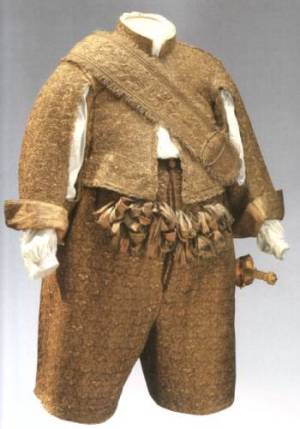

| ANNE WANNER'S Textiles in History / book reviews, articles |
| - A
propos des brodeurs parisiens de la permière moitié du
XVIIe siècle - Ornements brodés pour la Couronne de Suède in: Un temps d'Exuberance, les Arts Décoratifs sous Louis XIII et Anne d'Autrice, from 1610 to 1661, exhibition catalogue, Grand Palais, Paris, 2001, p. 857-868 by Danièle Véron-Denise |
| In the first of the
two articles the author deals with professional
embroiderers, grouped in a corporation and also known as
"brodeurs chasubliers" which means that they
embroidered church textiles as well. The brotherhood of
embroiderers was founded in 1471 and had its residence in
the church Sainte-Opportune. In the kings's palaces there
lived embroiderers who were supposed to work for the king
exclusively. They were not allowed to have their own
business or other clients. Around 1648 there were in
Paris between 200 and 300 embroiderers, in 1700 there
were 273.
|
|
| During the reign of Anne
d'Autriche, Nicolas de la Fage was embroiderer and
painter of the King and the Queen from 1646-1665. Charles
Hulin embroidered for the King in 1657, and so did
Dominique Lerminot from 1656 until his death in 1693.
Anne d'Autriche had at least one woman among her
embroiderers, Jeanne Dubois who was a niece of Nicolas
Dubois, embroiderer of Henri IV. She was related to other
embroiderers with the name Dubois. There were also wifes
of embroiderers like the wife of Mathieu Croquet.
Charlotte Herbinet worked before 1625 in the house of
Henriette de France, sister of Louis XIII. A document from 23 february 1645 mentiones a series of purchases and also the two master embroiderers Pierre Boucher and Denis Coron. They were commissioned by the king to work a complete coach equipment with saddle and harness for 6 horses. Another document says that it had to be done for Henry d'Orléans, duc de Longueville, and he had to be in Muenster where during several years the discussions about the end of the 30 years war took place. He arrived there on the 30st of June 1645. With his splendid appearance he not only influenced these proceedings but french gold embroidery had its influence to the european fashion as well. Specially the Swedish councelor Jean Oxenstierna was impressed by those works of art. |
| The other article of
Danièle Véron-Denise deals with embroideries
for the swedish crown. In the cabinet royale des Armes in
Stockholm there are still preserved some splendid gold
embroideries made for the coronation of Queen Christine
of Sweden on 20 October 1650. Already in 1647 the
counselors of the Queen started to organize this event.
They wanted to show to all Europe the growing importance
of the northern kindom. The french embroiderer Pierre
Boucher worked here together with other craftsmen as for
instance Fridrich Feuerborn, woh was named in Sweden
Feuwrbrun, from 1638 - 1648. Since 1651 we find him
inscribed in the church registre of the german church.
Earlier he lived in France where he was married to Marie
Leclerc, in her family there were many embroiderers. In
Sweden he had a new wife, Denise Bigran, a son was born
to them in 1651. Feuwrbrun died in 1675. In 1654 Christine renounced to the throne and her cousin became king. Charles-Gustave took the name of Charles X. In this year again splendid ceremonies took place, but there were no new commissions in Paris, the embroidered objects of 1650 were again used. In 1660 Charles X died and his funeral gave occasion to new festivities. |
 |
| Embroidered textiles
in the exhibition: - Coffret
au chiffre de Marie de Médicis, beginning 17th c., Paris,
musée du Louvre, Inv. OA 9463 - Coffret
à tiroirs, around 1630, Paris, Initials A.D.B, Paris,
musée du Louvre, Inv. OAR 306 - Deux draperies du carrosse du
couronnement de Christine de Suède, made in Paris
between 1647 and 1650, Stockholm, Inv. 751 a,b |
| home content | Last revised June 30, 2002 | For further information contact Anne Wanner wanner@datacomm.ch |